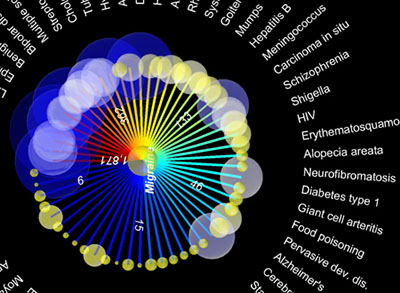In July 2007, Robert Brackett, then director of the FDA’s Center for Food Safety and Applied Nutrition said during the Castleberry canned chili sauce botulism outbreak consumers may be suffering "recall fatigue," given the rash of recalls the past year for spinach, carrot juice, lettuce, peanut butter, pet food and other products. "That’s a real phenomenon. If people aren’t getting sick or their family isn’t, they think ‘Oh, it’s not going to happen to me.’"
I said that public communications about such undertakings must be rapid, reliable, repeated and relevant, and that the produce outbreaks of 2006 marked significant changes in how stories were being told on Internet-based networking like YouTube, wikipedia, and blogs. Producers, processors, retailers and regulators of agricultural commodities not only need to be seen — and  actually — responding to food safety issues in conventional media, they must now pay particular attention to the myriad of Internet-based social networking sites that allow individuals to act as their own media outlet. Further, proactive producers, regulators and others in the farm-to-fork food safety system will become comfortable with the directness — and especially the speed — of new Internet-based media.
actually — responding to food safety issues in conventional media, they must now pay particular attention to the myriad of Internet-based social networking sites that allow individuals to act as their own media outlet. Further, proactive producers, regulators and others in the farm-to-fork food safety system will become comfortable with the directness — and especially the speed — of new Internet-based media.
In 2010, the Washington Post reported that government regulators, retailers, manufacturers and consumer experts were concerned that recall notices have become so frequent across a range of goods — foods, consumer products, cars — that the public is suffering from "recall fatigue."
Craig Wilson, assistant vice president for quality assurance and food safety at Costco, was quoted as saying in 2010 that, "The national recall system that’s in place now just doesn’t work. We call it the Chicken Little syndrome. If you keep shouting at the wind — ‘The sky is falling! The sky is falling!’ — people literally become immune to the message."
Today, USA Today has a story about recall fatigue.
Consumers last year were deluged with 2,363 recalls, or about 6.5 recalls each day, covering consumer products, pharmaceuticals, medical devices and food, according to data from the U.S. Food and Drug Administration, the Department of Agriculture and the Consumer Product Safety Commission. The recalls announced mark a nearly 14 percent increase from 2,081 in 2010 and compare with about 1,460 in 2007.
Christopher Doering writes that the increase is the result of a combination of greater oversight by regulators, better testing procedures and the use of social media where consumers can quickly point out and discuss problems with other people.
Increasingly, retailers and government agencies are expanding the methods they use to communicate with the public — from social-media technologies such as Twitter and Facebook to more traditional methods such as phone calls and postings within their stores. But the same methods that prove successful in reaching one customer could just as easily be ignored by another.
"We don’t feel that our members are getting bombarded but certainly the general public is and sooner or later you don’t know what to believe," said Craig Wilson, vice president for quality assurance and food safety at the warehouse giant Costco.
The 602-store warehouse chain uses data supplied from its estimated 60 million members and notifies them within 24 hours if they’ve purchased a recalled item. It then follows up with a letter.  The result is that customers return about 90% of recently recalled products and, in the case of major recalls such as when a food product could cause serious health problems or death, Costco gets "the majority of everything that was sold back."
The result is that customers return about 90% of recently recalled products and, in the case of major recalls such as when a food product could cause serious health problems or death, Costco gets "the majority of everything that was sold back."
But Wilson says the national recall system "doesn’t work as designed" and that consumers and retailers alike would benefit from a single, uniform network. He says the CPSC, USDA and FDA each have a different recall system with unique requirements, making it more difficult for companies like his to make sure they are complying with the rules.
At Rochester, New York-based Wegmans, the grocery chain has a detailed recall plan that can require hundreds of people to carry out. The 81-store East Coast chain follows a recall protocol increasingly common among retailers: posting recall information on its web page and within stores for customers, notifying its followers using social media tools and, when possible, calling individuals who may have used a store card for the purchase.
Businesses can ease the burden of a recall on their reputation and bottom line by being honest and upfront with their customers and crafting a response plan before any recall occurs that outlines what they will do with the public, media and regulators, industry watchers say.
USDA Secretary Tom Vilsack downplayed the number of recalls that are announced considering the number of products that are produced, items that are sold and meals consumed each day.
"I think people want to know and need to know and have a right to know if there is a problem with a particular product," said Vilsack. "We’re going to look at ways in which we (communicate) and constantly improve how we communicate but we’re not going to stop communicating."

 movie is about me, or us).
movie is about me, or us).

.jpeg) race was the same potable water that is distributed throughout Southern Nevada, and it was important to quickly determine if the general population was at risk of disease.
race was the same potable water that is distributed throughout Southern Nevada, and it was important to quickly determine if the general population was at risk of disease. accurate data, but timely data."
accurate data, but timely data." agree that it is great for one thing: communication.
agree that it is great for one thing: communication..jpg) vomiting on the buses, in their hotel and at the club.
vomiting on the buses, in their hotel and at the club. searching and figure out how and why this happened. The overriding concept to underline is that they are never going to have their name in the news about this again.”
searching and figure out how and why this happened. The overriding concept to underline is that they are never going to have their name in the news about this again.” telling her brother in the movie, "don’t worry, someday you’ll be cool").
telling her brother in the movie, "don’t worry, someday you’ll be cool"). higher value on public health.
higher value on public health. laugh now, but when it happens you’ll be happy you read this, and hey, maybe you’ll even learn a thing or two about how to prepare for a real emergency."
laugh now, but when it happens you’ll be happy you read this, and hey, maybe you’ll even learn a thing or two about how to prepare for a real emergency.".jpg) up in the hospital.
up in the hospital. Ministry trying to file a complaint. Once she explained what happened, Valdés said she was told that four denuncias weren’t enough to lead to an inspection. On Facebook though, the complaints found an audience.
Ministry trying to file a complaint. Once she explained what happened, Valdés said she was told that four denuncias weren’t enough to lead to an inspection. On Facebook though, the complaints found an audience.